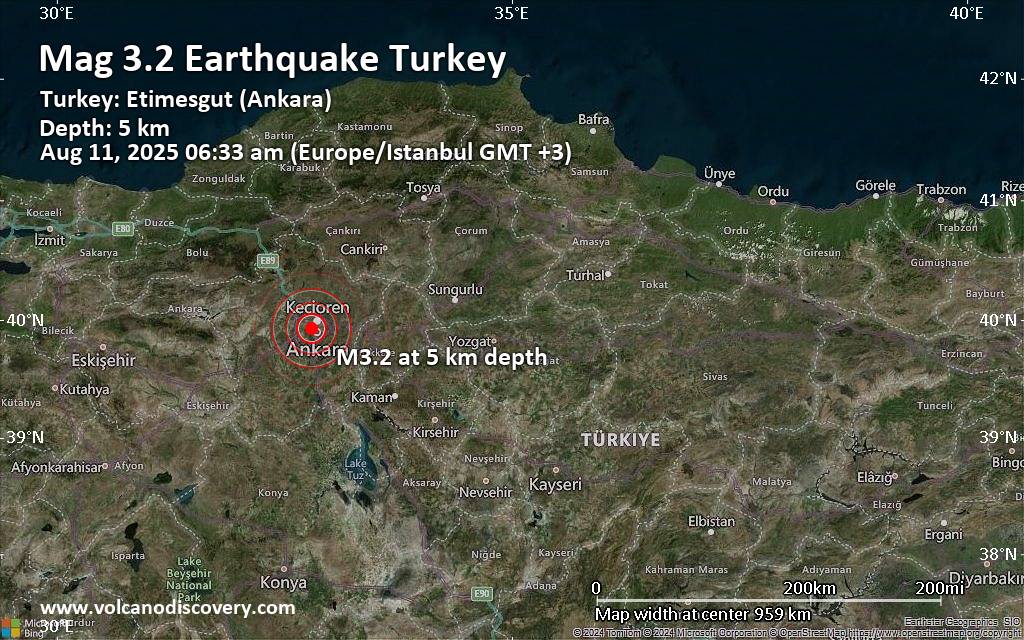RSS feed source: Volcano Discovery.com--Global earthquake monitor
Mon, 11 Aug 2025, 04:07 | BY: EARTHQUAKEMONITOR
Turkey’s Disaster and Emergency Management Authority (AFAD) reported a magnitude 3.2 quake in Turkey near Ankara, 33 minutes ago. The earthquake hit early morning on Monday, August 11th, 2025, at 6:33 am local time at a very shallow depth of 4.70 km. Magnitude and other quake parameters can still change in the coming hours as the agency continues to process seismic data.
Our monitoring service identified a second report from the Kandilli Oservatory and Earthquake Research Institute in Istanbul (KOERI-RETMC) which listed the quake at magnitude 3.4. A third agency, the European-Mediterranean Seismological Centre (EMSC), reported the same quake at magnitude 3.2.
Based on the preliminary seismic data, the quake should not have caused any significant damage, but was probably felt by many people as light vibration in the area of the epicenter.
Weak shaking might have been felt in Ankara (pop. 3,517,200) located 5 km from the epicenter, and Cankaya (pop. 792,200) 6 km away.
Other towns or cities near the epicenter where the quake might have been felt as very weak shaking include Kizilcasar (pop. 8,600) located 13 km from the epicenter, Incek (pop. 5,600) 16 km away, Dumlupinar (pop. 4,500) 25 km away, Akyurt (pop. 26,600) 34 km away, and Kazan (pop. 23,900) 35 km away. In Elmadag (pop. 25,400, 37 km away), Cubuk
Click this link to continue reading the article on the source website.


